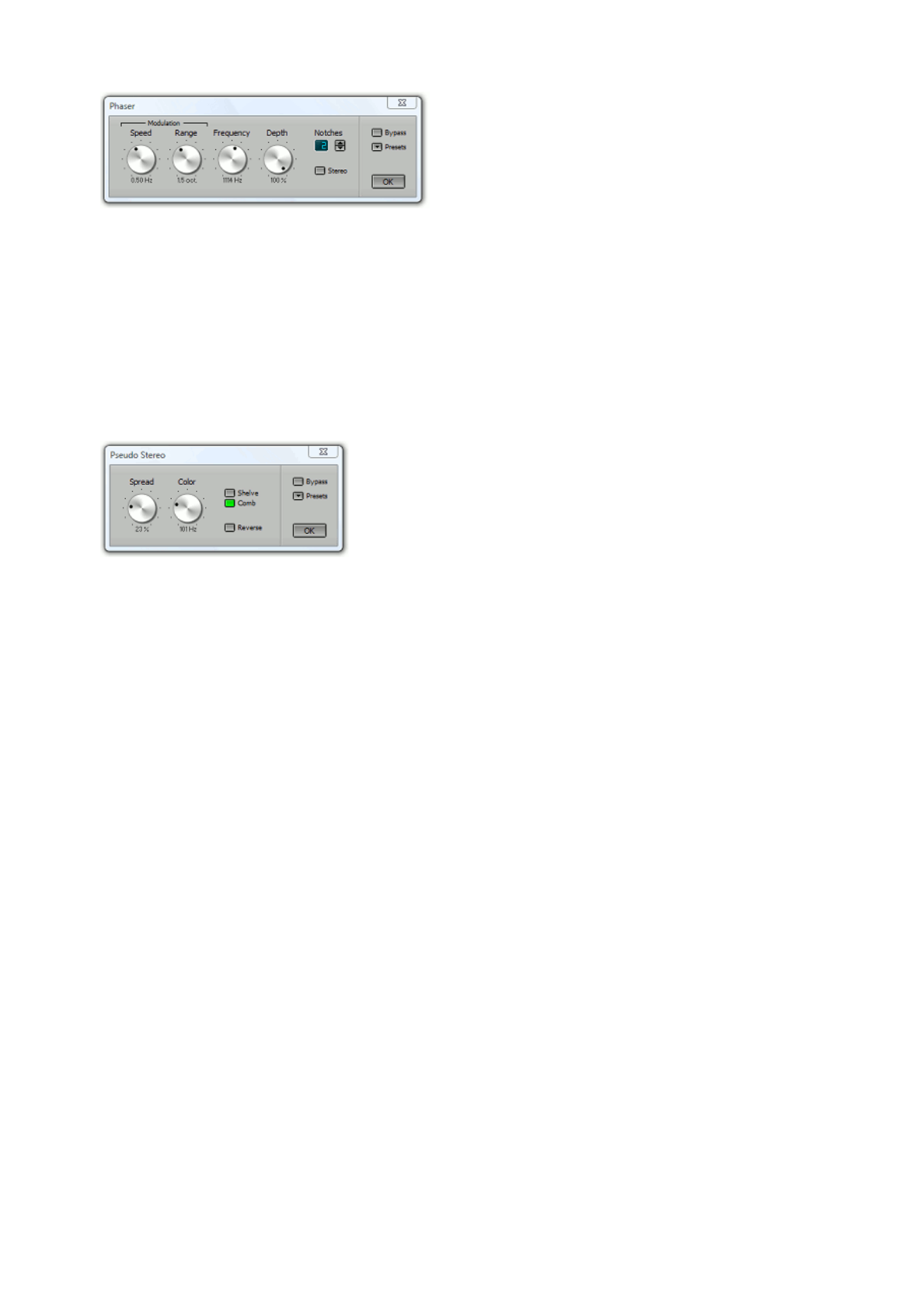User Guide
Table Of Contents
- Contents
- 1 Introduction
- 2 Songs
- 3 Transport
- 4 Recording
- 5 Playback and Mixing
- 6 Mastering and Mixdown
- 7 Effects
- 7.1 Automated Fader
- 7.2 Band Effect
- 7.3 Chorus
- 7.4 Compressor
- 7.5 Convolutor
- 7.6 Deesser
- 7.7 Doubler
- 7.8 Dynamics
- 7.9 Echo
- 7.10 EQ
- 7.11 Exciter
- 7.12 Flanger
- 7.13 Guitar Amp
- 7.14 Master Limiter
- 7.15 Multi Effect
- 7.16 Noisegate
- 7.17 Parallel Effect
- 7.18 Phase Inverter
- 7.19 Phaser
- 7.20 Pseudo Stereo
- 7.21 Reverb
- 7.22 Rotor
- 7.23 Saturation
- 7.24 Stereo Effect
- 7.25 Tremolo
- 7.26 Tuner
- 7.27 Vibrato
- 7.28 VST Plugins
- 7.29 DX Plugins
- 7.30 External Sidechain Routing
- 8 MIDI Instruments
- 9 Automation
- 10 Editing
- 10.1 Editing Tracks
- 10.2 Editing Audio Tracks
- 10.3 Vocal Pitch Correction
- 10.4 Editing MIDI Tracks
- 10.5 Editing Notes
- 10.6 Pianoroll Editor
- 10.7 Notation Editor
- 10.8 Drum Editor
- 10.9 Controller Editor
- 10.10 MIDI Pattern Editing
- 10.11 Tempo/Time Signature Editing
- 10.12 Song Editor
- 10.13 Multi MIDI Editor
- 10.14 Multitrack Editing
- 10.15 Chords and Lyrics
- 11 Devices
- 12 Control Surfaces
- 13 Audio and MIDI Files
- 14 Keyboard Shortcuts
- 15 Touchscreens
- 16 Preferences
- 17 Tools
- 18 Miscellaneous
- 19 Requirements
- 20 Troubleshooting

Phaser window
Frequency controls the tonal character of the effect.
Range determines the distance the notches move. High values can lead to noticeable pitch shifts.
Speed controls the speed used to move the notches.
Depth controls how deep the notches are (the deeper the notches, the more intense the effect).
The Stereo button can be used to create a stereo effect by moving the left and right channel notches in
opposite directions.
7.20 Pseudo Stereo
The Pseudo Stereo effect converts a mono signal to stereo using a filter.
Pseudo Stereo window
Two filter types are available:
l Shelve: Low frequencies are directed to the left channel, high frequencies are directed to the right
channel. The Color knob controls the crossover-frequency.
l Comb: A delayed signal is added to the left channel and subtracted from the right channel. The Color
knob controls the distance between the notches of the comb filter.
The Spread knob controls the resulting stereo width. The Reverse button reverses the left and right
channels.
The effect doesn't do anything if the input signal is stereo. The Pseudo Stereo effect is mono compatible (if
the stereo outputs are summed the resulting signal is equal to the original mono input signal).
7.21 Reverb
The Reverb effect contains four programs:
l Room is a small room program, can be used to add 'ambience' to vocals.
l Chamber is an echo chamber program.
l Hall is a concert hall program.
l Plate is plate program.
The Reverb effect is typically used in an Effect Return section.










